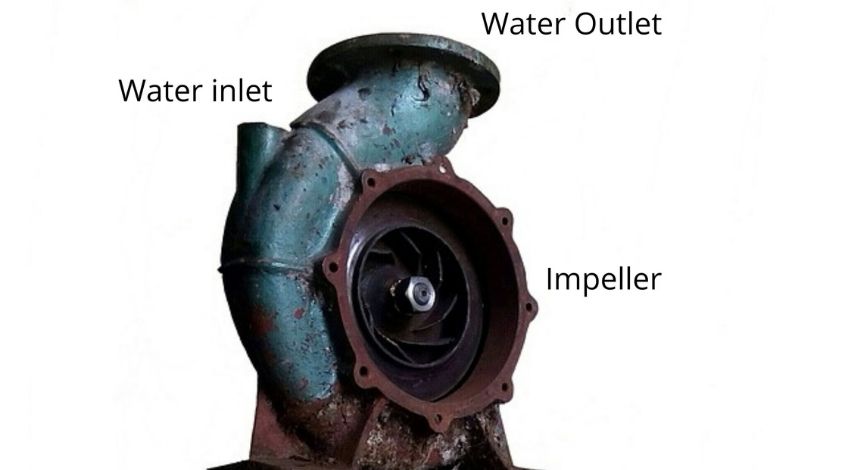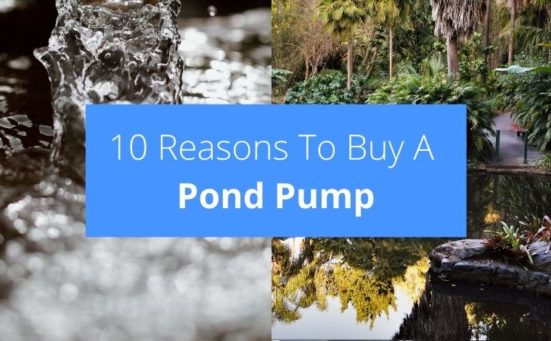
What Are Pond Pumps? How Do They Work? And What Types Are There?
If you have a pond or are considering installing a pond for fish in your garden, you will need a pond pump of some type. A pump brings your pond to life in more ways than one, imagine sitting beside a stream, what do you hear? The ripple of the water, or maybe the sound of the water cascading over a few rocks.
A pond pump will also deal with any debris in the water, filtering it out to keep the water crystal clear and looking crisp. But it’s the fish who’ll benefit the most, why? Because still water soon runs out of oxygen. This will result in the death of your fish.
And it’s not just the fish, any aquatic plants or insects need oxygenated water too. So let’s have a look at pond pumps, what are they? And how do they work?
What Are Pond Pumps?
If you think about any pond or lake, the water is fed into it from a stream or brook or some other source of moving freshwater. It’s that motion of the water moving that creates oxygen and CO2and that prevents the water from stagnating. Also in a natural pond, there will be fish and other bottom feeders keeping debris levels down.
Well, pond pumps replace both the flowing water source and the filtration system. They can be used just to create a slight movement around the pond and filter the water, or they can be used to recreate streams, waterfalls and even fountains. The very act of agitating the water allows it to absorb oxygen faster.
How Do Pond Pumps Work?
Pond pumps work on a simple principle, water is sucked in one side, passes through a filter and exits the pump on the opposite side under pressure. This is caused by an impeller, powered by electricity that rotates to create the water movement. The water flow rate is determined by the size of the impeller and the amount of power turning it.
So, a larger impeller can pump more water at a faster rate than a smaller impeller. The size of the impeller will determine the amount of power the motor needs to turn it. The larger the motor, the more power it consumes.

What Types Of Pond Pumps Are There?
There are 2 basic types of pond pumps, external and submersible. The names give the game away as to where they go to do their work, external pond pumps are kept out of the pond and work by a system of hoses or pipes to transport the water to and from the pond. As the name suggests, submersible pond pumps actually sit on the pond bottom, underwater.
- External Pond Pumps
These are positioned out of the water and are usually hidden by bushes, screens or large rocks. Because they don’t have to fit under the pond water, external pond pumps tend to be larger and more powerful than submersibles. They are also much louder when in operation, and more expensive. If you’re planning a large pond or a pond with a large waterfall or fountain an external pump will be your best bet. One disadvantage of external pond pumps is the need to prime them. This means you have to ensure there is water in the pipes before starting the pump. Failure to do so can lead to the motor burning out. - Submersible Pond Pumps
These are placed directly under the water and are more suited to small to medium ponds. They are cheaper to buy, cheaper to run and they have no external piping to worry about. Submersible pond pumps also tend to be almost silent in operation, but they have less power than external pumps. As the filter is attached to the pump and is, therefore, smaller than an external pumps filter, they tend to need cleaning more frequently. As they are less powerful they can’t deal with as much water flow as external pumps, but that’s not to say they aren’t useful, many a small pond is thriving by using a small submersible pump. - Ornamental Pumps
These are usually small submersible pumps set into a separate water feature like a small fountain or stand-alone water feature. Some are even solar-powered, and at one time were very popular. That popularity has waned somewhat now since it was discovered that as the pumps were so small, they never had an effective filter fitted and quite large pieces of debris could pass through the pump and clog the fountainhead or pipe feature. - Filter Pumps
These are so named because of the large filter they sport which can trap particles up to 12 mm (½ inch) in size. They are also designed to run 24 hours a day 7 days a week. Plus the water flow is powerful enough to run a waterfall or fountain. They can be expensive to run as they are running continuously. Try to find an eco-friendly version that will use less power. - High-Pressure Pumps
These can be used with stand-alone water features like pondless waterfalls etc as they incorporate a high-power water flow and a cutout feature should water levels fall too low to protect the pump from overheating and burning the motor out. They’re usually used for a few hours per day and then switched off, as they are also relatively inexpensive they make great back-up pumps in case the main pump fails. - Dry-Mounted Pumps
These are external pumps that are easy to maintain and clean and they can be sited almost anywhere. All that is needed are 2 pipes in the pond, 1 is an intake and the other is the outflow. They rely on gravity to send the water to the filter and then the pump sends the clean water back into the pond.
Frequently Asked Questions
A waterfall does oxygenate a pond, anything that agitates the water will increase the rate of oxygen absorption in the water.
Pond fish can survive without a pump, but not for long. The water will run out of a sufficient amount of oxygen for the fish to survive without a pump agitating the water.
The size of the water pump you need for your pond is one that can pump around 50% of the volume of water in your pond per hour. For instance, a 1000 gallon pond would require a pump that pumps 500 gallons per hour (GPH).
It is OK to turn off a pond pump at night, as long as you don’t have fish in it. If it has fish, the pump should remain on all day and night.
Also, follow us on Pinterest ...


